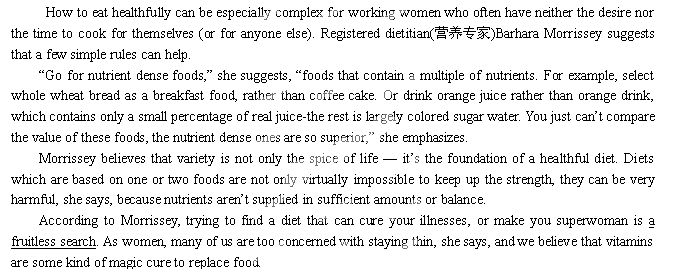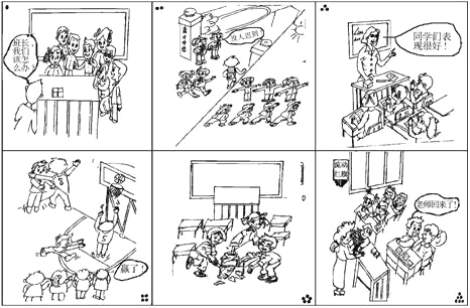��Ŀ����
����Ŀ���ٶ�Ӣ�������ʦҪ��ͬ��֮�佻�������ģ���������ͬ��д���������ġ����й���10�����Դ���ÿ���������������ÿ��������漰һ�����ʵ����ӡ�ɾ�����ġ�
���ӣ���ȱ�ʴ���һ��©�ַ��ţ��ģ�������������д���üӵĴʡ�
ɾ�����Ѷ���Ĵ���б�ߣ��ܣ�������
�ģ��ڴ��Ĵ��»�һ���ߣ����ڸô�����д���ĺ�Ĵʡ�
ע�⣺1.ÿ���������ľ���һ��;
2.ֻ������10�������ߣ��ӵ�11���𣩲��Ʒ֡�
I��ve been dancing since I am five. My parents, that were very strict with me, put me in many famous dance studio. I must go to dance almost every day, and only rested in Sundays. My parents wanted me learn every kind of dance so that when he owned my dance studio, I could teach other students. I loved dancing or sometimes they pushed me so hard that I hated it. Anyhow, I thanked them for pushing me and make me an excellent dancer. When I was 20 I opened my own dance studio with their help. Now I��m glad to be able to teach different people what to dance.
���𰸡�
��������1.am��was ����ʱ̬������Ϊ�����Ҵ����꿪ʼ�������������ǶԹ�ȥ��˵���������һ���ȥʱ���ʽ�am��Ϊwas.
2.that��who ���鶨��Ӿ䣬��������д���parents,Ϊ�����Զ���Ӿ䣬���Թ�ϵ������who,�ʽ�that��Ϊwho.
3.studio��studios ���鵥����������ǰ�����many����֪��������dance studio����ֹһ��������Ҫ�ø������ʽ�studio��Ϊstudios.
4.in��on �����ʣ�����Ϊ��ֻ����������Ϣ�������嵽ijһ�죬ǰ��Ľ����on,�ʽ�in��Ϊon.
5.��to ���鲻��ʽ������Ҫij�˸�ij������want sb to do sth,�ʽ�learn��Ϊ to learn.
6.he��I �����˳�һ�� ������ᄈ��֪������Ϊ�����������Լ����赸�ң��ҾͿ��Խ�������ѧ�������ʽ�he��ΪI.
7.or��but �������ʣ�����ᄈ������Ϊ�������Ȱ��赸��������ʱ�����DZ���̫���ˣ���������������������������ǰ��ת�ۣ��ʽ�or��Ϊbut.
8.make��making ���������䡣Thank sb for doing sth,��лij�˸�ij�£��ʽ�make��Ϊmaking.
9.a��my ����̶����䡣����Ϊ���������ǵİ����£��ҿ����Լ����赸�����������Լ�������Ϊ��my own��,�ʽ�a��Ϊmy.
10.what��how �����ϵ���ʡ�����Ϊ���������Һܸ����̲ܽ�ͬ�����������������ʾ��ʽ�Ĺ�ϵ����Ϊhow,�ʽ�what��Ϊhow.

����Ŀ���Ķ����ж���, ��ÿ���������ĸ�ѡ��(A��B��C��D)��, ѡ�����ѡ�
A
Greco-Roman Festival Friday, April 28th! As a member of the group, you will take part in at least one of the following activities. |
Activity I: Compete in an Olympic event
Sign up with your English teacher, and remember space is limited for each event. See the following list:
�� Hercules Throw �� Throw a football through a hoop (����) 20 feet away.
�� Three-Headed Race �� Three people line up with touching legs tied. Then they run the distance of the gym.
�� Toga-Barrow Race ��This is like a wheelbarrow race while wearing your toga (������). (Runners hold their partners�� feet while they walk on hands.)
Activity II: Make Greek or Roman food
Mrs. Jones has a list of recipes (ʳ��) from ancient Greece and Rome. Remember to give the food you make a unique name. For example, call your chocolate cake Zeus��s Delight.
Activity III: Create a work of art for the museum
Be sure your artwork reflects ancient Greek or Roman culture. Artwork may include sculptures, paintings, drawings or models. The museum is a great place to show off your artistic talent.
Activity IV: Perform an original play, song, or dance for the talent show
Rewrite your favorite Greek myth (��) using modern language, or change the words of a popular song to tell a Greek or Roman tale. Gather your creative energy and send your ideas to your English teacher for approval.
Activity V: Come to the Toga-Tying party
Since the ancient Greeks should inspire your dressing for the event, feel fre to attend the festival in a toga. Learn to tie your toga. Thursday, April 27th. After school in the gym.
Group Number | 1:00 pm -1:25 pm | 1:30 pm -1:55 pm | 2:00 pm -2:25 pm | 2:30 pm -3:30 pm |
I | Activity I; Place: Gym | Activity III; Place: Library | Activity II; Place: Cafeteria | Activity IV; Place: Library All teams! Hurry! No seats reserved. |
II | Activity II; Place: Cafeteria | Activity I; Place: Gym | Activity III; Place: Library | |
III | Activity III; Place: Library | Activity II; Place: Cafeteria | Activity I; Place: Gym |
��1��We can learn from Activity I that _____.
A. players wear a toga for the football throw
B. different physical competitions are offered
C. Mrs. Jones is the judge of the competitions
D. skills in throwing are needed in these games
��2��Which piece of art would be shown in the useum?
A. A painting of ancient Chinese coins.
B. A drawing of ancient Greek buildings.
C. A sculpture of an ancient Indian athlete.
D. A model of an ancient Egyptian sculpture.
��3��Right after showing the artwork, Group II may go to _____.
A. make Greek or Roman food
B. compete in Olympic events
C. perform at the talent show
D. join the Toga-Tying party
��4��The text is most probably _____.
A. a poster for school activities
B. a want ad for student volunteers
C. an introduction to the Greco-Roman Festival
D. a notice about arrangements for Olympic events




